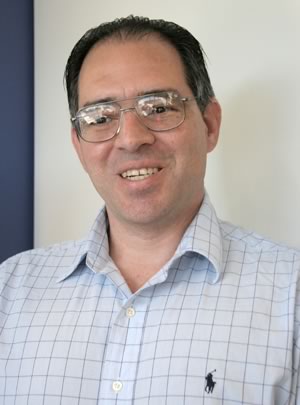Paul Wright
In May 1990 with a start-up budget of $50, Prison Legal News (PLN) began publishing from behind bars at two prisons in Washington State. Paul Wright, its editor, was ordered to “the hole” – solitary confinement – for twenty days for a piece describing guard brutality. The first few issues were banned from all the state’s prisons.
Fifteen years, 185 issues and scores of retaliatory punishments and censorship attempts later, Prison Legal News boasts 4,500 subscribers in all 50 states and circulates in every medium and maximum security facility in the United States.
Born and raised in South Florida, Wright enlisted in the army at 18 as a way to get the money to pay for college. Hoping to work in military intelligence, he was offered a choice of jobs as a cook, a Hawk missile technician or a military policeman. He chose to be an MP. Attending school at night, he earned a bachelor’s degree in Soviet history.
While still in uniform, Wright was involved in a botched armed robbery and was convicted of first degree felony murder and imprisoned for 17 years. Behind bars, Wright began to teach himself law. Working with Ed Mead, a veteran prison activist, he decided to publish a small, monthly newsletter that would focus on prisoner organizing and encourage self-reliance. Mead and Wright each typed five pages in their cells, laid out the issues with blue pencils and glue sticks and had a volunteer on the outside copy and mail them.
Publishing evidence of neo-Nazi and racist activity among state prison guards and breaking stories about corporations like Boeing, Microsoft, Starbucks and Nintendo profiteering from prison labor, the newsletter’s support and circulation slowly grew among prisoners, lawyers and others involved in criminal justice. After Mead was paroled, Wright went ahead on his own, becoming a skilled jailhouse lawyer and activist in addition to writing and soliciting articles from prisoners and outside contributors. Many of PLN’s critiques began to be picked up by the mainstream media and by labor groups. Its determined litigation to obtain public records and circumvent censorship began to have an effect.
During the fifteen years that PLN has been published, the prison and jail population in the U.S. has doubled and prison conditions, overcrowding and brutality continue to worsen. “When some purported to be shocked by the photographs of Abu Ghraib,” Wright says, “we could sadly point out that PLN had been reporting similar occurrences in American prisons since 1990.”
Released in December of 2003, Wright spent his first day out of prison learning how to use the internet and email, meeting with a legal team that was working on a PLN censorship case and doing a television interview on prison slave labor. He hasn’t stopped since.
Wright believes that PLN’s success must ultimately be judged by its usefulness to the prisoners, activists, journalists, lawyers and citizens who try to make a difference. On that count, Bridgette Sarabi, executive director of the Western Prison Project, says, Wright has the evidence on his side. “Paul Wright has not only shown fearless leadership in advocating for the rights of the incarcerated but has also helped untold numbers of prisoners become more effective advocates themselves. He has forced large prison bureaucracies to be more accountable. He has given hope to millions and his work has undoubtedly saved lives.”
